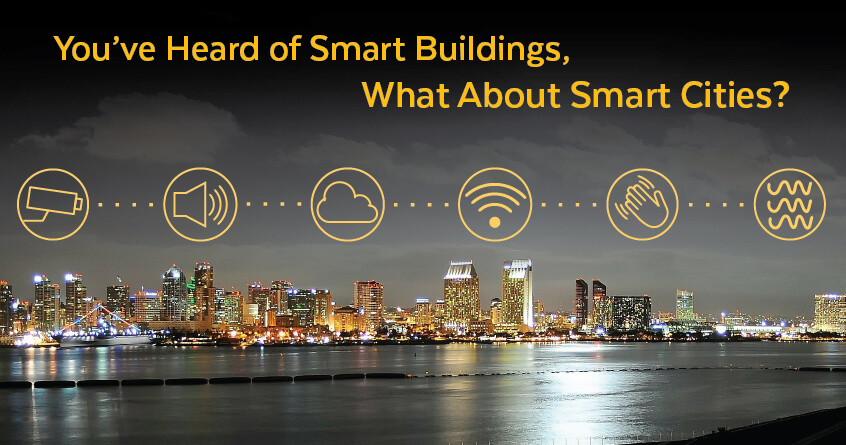The ‘Internet of Things’ has become the world we live in.
Smart phones turned to smart buildings, and the rapid growth of ‘intelligent’ engineering has turned the world we live in into a database of data being powered by tech.
And now, smart cities are becoming a thing.
San Diego, California has deployed the world’s largest Smart City Platform.
Here’s what that means.
What is a Smart City Platform?
Urban and regional planning, city planning, rural planning, urban development — whatever you want to call it — relies on the right data to make the best decisions.
Urban development is not one thing, but one of many. It is an interdisciplinary approach that includes social, engineering and design sciences.
A “smart city platform” is a system that allows information to be gathered and analyzed for the purpose of designing land use, decreasing traffic congestion, planning public transportation, and developing infrastructure that supports and maintains an expected quality of life.
Put simply: it’s not an easy job.
City planning relies on sophisticated scientific models to extrapolate future needs, and to spot issues in sustainability and infrastructure, as the population grows.
This is in fact a huge challenge. Human beings create 2.5 quintillion bytes of data each day. That number isn’t getting any lower. We live in a world that is changing at such a quick pace that the methods of old simply do not work with today’s needs.
The Origin of Smart Cities Often Starts With PoE Lighting
That’s how it began in San Diego.
What started as an effort to cut costs by replacing HPS (High Pressure Sodium) streetlights with energy-efficient LED lighting, evolved into a city transforming its infrastructure in a way that gave city planners unparalleled insight into the inner-workings of the city.
The move from traditional streetlights to LED lighting made enormous sense, and it didn’t need any more support outside the growing evidence of climate change. According to a government report from the US Department of Energy, streetlights eat up 30% of all energy used to generate power for outdoor lighting. Sixty percent goes to lighting parking lots and garages.
The reality is a lot of that energy is still produced by fossil fuels.
The use of PoE lighting in city infrastructure drastically reduces energy needs. Because of the low voltage and power consumption of LED lighting, these types of lighting systems can be powered by solar panels and are cheaper to maintain.
In the case of San Diego, the city took it a step farther and built on the connectivity of the smart lighting infrastructure to capture an unreal amount of data.
You’ll never look at a streetlight the same.
San Diego’s smart city platform has been designed to capture audio, video, vibration, motion and more. The applications are interesting, and can be expanded. Some see it as a solution. Some would say it’s an Orwellian nightmare.
The anonymous data collected by the sensor nodes can be used to develop applications and systems that benefit the City and the community. These sensor nodes generate metadata (static data on parking, vehicle counts, pedestrian counts, temperature, humidity, pressure). The nodes connect to technology partner GE’s CityIQ cloud database to make the metadata collected by the sensors available. This open data platform possibilities range from pedestrian safety and directing drivers to open parking spaces to mobility planning and optimization, to helping first responders during an emergency and urban and real estate development planning. Our hope is that new applications will be built using this technology to help improve city services and initiatives. — SanDiego.gov
Here is how data is captured:
- Video: Used to determine traffic patterns, vehicle accidents, pedestrian traffic and crowd size. Also used for solving crimes in some cases.
- Audio: Used for incident analytics and gunshot detection, which identifies the sound of a gunshot and instantly shows police the area shots were fired.
- Vibration: Used for seismic reporting and analytics, along with bridge stress detection.
- Motion: Used for traffic light control and to cut energy costs by reducing lighting when no motion is detected.
- Environmental: Used to collect pollution data and to detect gas leaks or radioactivity.
Beyond the cost-savings, city planners are steering towards smart systems because of the connectivity of the infrastructure, the ability to share real-time data, and the benefit of having future-proof infrastructure that can be expanded as needs arise.
Of course, while those benefits seem to outweigh the status quo in street lamps, privacy advocates cannot be happy about living in a city that listens, watches, and collects data at the same time.
What’s your take? Do the benefits outweigh the privacy costs?
